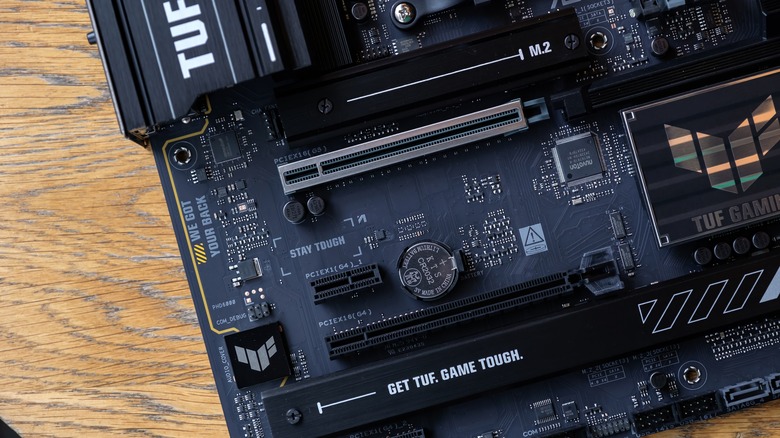
PC components have a finite number of channels that connect with the CPU. These channels are physically built into the CPU, the motherboard, and the components themselves — and they’re called PCIe lanes. Every GPU, SSD, or creator card you plug into your motherboard needs to send data to the CPU to function, and it does that through these PCIe lanes.
Every CPU has a fixed number of PCIe lanes, which dictate the bandwidth and are listed as x4, x8, x16, or x20 in spec sheets and user manuals. Plugging components into the PCIe slots uses up those lanes. The GPU, for instance, is usually installed into the primary x16 slot for the most bandwidth. If you have an M.2 SSD, that will use up four additional lanes, taking up a total of 20.
If your CPU only offers 20 lanes, any additional GPUs or SSDs will be routed through the motherboard’s PCIe lanes, which are still connected to the CPU, but indirectly. This is lane sharing in action, and it can slow things down without most users being aware. If you have PCIe 5.0 hardware and want to get full Gen 5 speeds, you’ll need full support across the board — that means a CPU, motherboard, and device with native Gen 5 support. But even then, your setup might not run at full speed if PCIe lanes become the bottleneck.
>>>AS07A31 Battery for Acer Aspire 2930G 4740G 5738G 4930 5735
AMD Ryzen CPUs offer more Gen 5 lanes than recent Intel CPUs
As of this publication, only AMD’s Ryzen 7000 and 9000-series chips offer full PCIe Gen 5 bandwidth without lane sharing. These CPUs offer 28 Gen 5 PCIe lanes total — enough for a GPU in an x16 slot and at least one PCI 5.0 5 NVMe SSD to run at max speeds. Intel’s 12 trough 14th-gen CPUs only offer 16 Gen 5 lanes for graphics and an NVMe to split. That means Intel’s Alder and Raptor Lake CPUs can’t run a Gen 5 GPU with a Gen 5 SSD at full speeds without lane sharing at the same time.
If you do install both a Gen 5 SSD and a GPU on Intel, something has to give — the SSD gets its full four lane bandwidth, but the GPU starts running at x8 instead of x16. With no SSD in the first M.2 slot, the GPU will use all 16 lanes. But if you drop even a Gen 4 SSD in the top PCIe x4 NVMe slot – that shares lanes with the GPU — on an Intel system, the GPU will still drop to x8. This is especially relevant for cards like the Radeon RX 9000 series and the RTX 50 series, which are designed to take full advantage of Gen 5 natively.
How to check if your SSDs are hurting your GPU performance
AMD gives you the most Gen 5 lanes upfront, but you’ll still need at least a B650e motherboard to actually make use of them. Entry-level B650 boards don’t offer Gen 5 M.2 slots at all, and even on high-end X870E motherboards — which come with up to three Gen 5 NVMe slots — the lane layout matters. Board documentation from Asus shows how lane sharing works on the X870E with different PCIe slots occupied: if you use the third M.2 slot, the first PCIe x16 Gen 5 slot drops to x8, and the second starts running at x4.
At eight lanes, that is still equal to x16 bandwidth of a PCIe 4.0 slot, and x8 for the second slot. If both the second and third M.2 slots have SSDs in them, that second PCIe x16 slot gets disabled entirely. Thankfully, the real-world impact is smaller than it seems — for gamers, at least. Gamers Nexus tested this with an RTX 5090 and found that dropping from Gen 5 x16 to Gen 3 x16 only resulted in a 1-4% performance loss in modern games.
>>>AS09C31 Battery for Acer Extensa 5635Z 5635ZG
However, if you still want to check your GPU’s PCIe lane configuration, use a software like CPU-Z — it’s easier than going through your motherboard manual. Just go to the “Mainboard” tab and look for the “Graphic Interface” section. Under the “Bus” block, check if the “current link width” link width matches the “max supported.” If they don’t match, your GPU is running at the lower of the two.